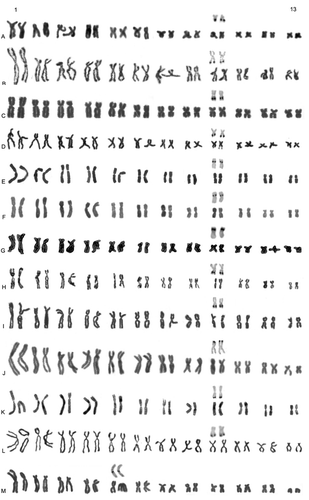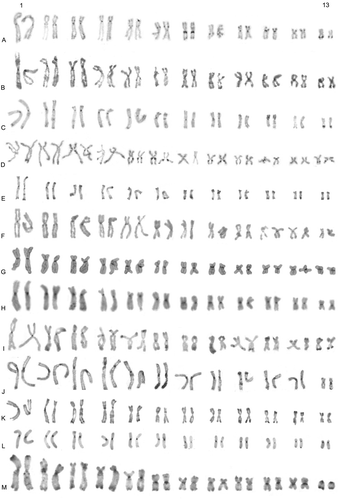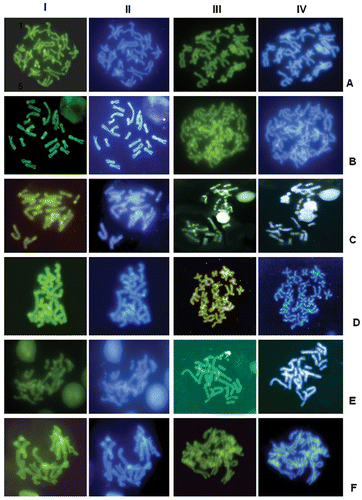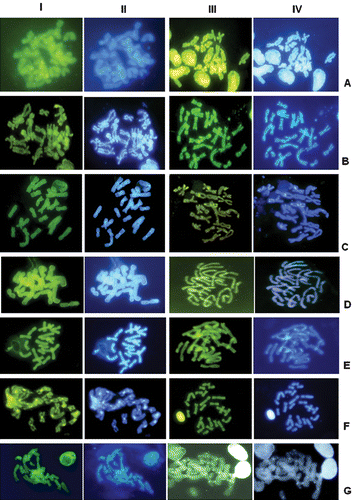Figures & data
Table I. Summary of previous knowledge on chromosome numbers of hyperoliid frogs. For detailed references, see King (Citation1990). Semnodactylus weali was originally considered to belong to the genus Kassina and its karyotype described as Kassina weali.
Figure 1 Giemsa stained karyotypes of the 13 studied hyperoliids.A, Heterixalus alboguttatus; B, H. andrakata; C, H. betsileo; D, H. boettgeri; E, H. luteostriatus; F, H. punctatus; G, H. rutenbergi; H, H. tricolor; I, H. variabilis; J, Acanthixalus spinosus; K, Hyperolius cf. viridiflavus; L, Kassina maculata; M, Leptopelis calcaratus. The Ag‐NOR banded pairs are reported above the corresponding Giemsa stained pairs.

Table II. Relative lengths (±SD; upper value) and centromerix indices (±SD; lower value) of chromosomes 1–12 in hyperoliid karyotypes studied.
Figure 2 C‐banded karyotypes of the 13 studied studied hyperoliids. A, Heterixalus alboguttatus; B, H. andrakata; C, H. betsileo D, H. boettgeri; E, H. luteostriatus; F, H. punctatus; G, H. rutenbergi; H, H. tricolor; I, H. variabilis; J, Acanthixalus spinosus; K, Hyperolius cf. viridiflavus; L, Kassina maculata; M, Leptopelis calcaratus.

Figure 3 Sequential C‐banding (rows I and II) or Alu I (rows III and IV)+CMA3 (rows I and III)+DAPI (rows II and IV) of: A, H. alboguttatus; B, H. andrakata; C, H. betsileo; D, H. boettgeri; E, H. luteostriatus; and F, H. punctatus. The colour version of this figure is available online.

Figure 4 Sequential C‐banding ( rows I and II) or Alu I (rows III and IV)+CMA3 (rows I and III)+DAPI (rows II and IV) of A, H. rutenbergi; B, H. tricolor; C, H. variabilis; D, Acanthixalus spinosus; E, Hyperolius cf. viridiflavus; F, Kassina maculata; and G, Leptopelis calcaratus. The colour version of this figure is available online.
